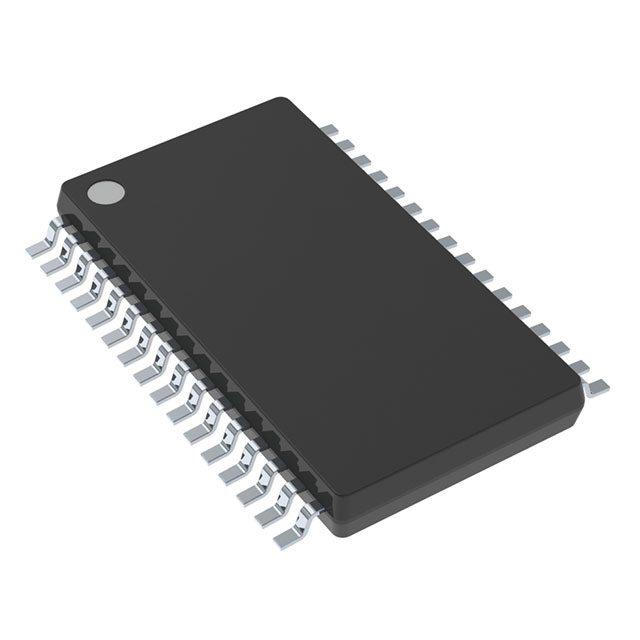Comparing TPS65381QDAPRQ1 and TPS65381AQDAPRQ1 for Automotive and Industrial Use

Choosing the appropriate power management IC is essential for safety-critical systems in both automotive and industrial applications. When evaluating TPS65381QDAPRQ1 vs TPS65381AQDAPRQ1, engineers can determine the optimal solution for their specific requirements. Both the TPS65381QDAPRQ1 and TPS65381AQDAPRQ1 are integral in delivering reliable performance and meeting stringent safety standards.
These ICs are well-suited for applications such as Electronic Power Steering (EPS), Anti-Lock Brake Systems (ABS), and Advanced Driver Assistance Systems (ADAS) in automotive systems. In industrial environments, they contribute to enhanced safety in programmable logic controllers (PLCs), railway signal control, and elevator systems. The decision between TPS65381QDAPRQ1 and TPS65381AQDAPRQ1 ultimately hinges on factors like performance, certification, and the demands of the application.
Key Takeaways
Pick the TPS65381QDAPRQ1 for very safe car systems needing ASIL D. It has advanced safety tools for important uses.
Use the TPS65381AQDAPRQ1 for both car and factory systems. It is cheaper and works with many safety rules.
Both chips give steady power and find problems, making them great for safe systems like ADAS and factory machines.
Think about your needs, money, and rules before picking one. Each chip is made for different jobs.
Both follow ISO 26262 rules, proving they are safe for cars and factories.
Overview of TPS65381QDAPRQ1 vs TPS65381AQDAPRQ1
Key Features of TPS65381QDAPRQ1
The TPS65381QDAPRQ1 offers a robust set of features tailored for safety-critical automotive applications. It provides a highly reliable power management solution for microcontrollers in systems requiring compliance with ISO 26262 standards. This IC supports multiple regulated power outputs, ensuring stable voltage levels for various components. Its integrated safety mechanisms include a watchdog timer, fault detection, and diagnostic capabilities. These features enhance fault tolerance and system reliability.
The device also excels in advanced safety applications like Electronic Power Steering (EPS) and Advanced Driver Assistance Systems (ADAS). It ensures consistent power delivery and monitoring, which are essential for maintaining system integrity. Additionally, its compatibility with ASIL D systems makes it a preferred choice for high-level automotive safety requirements.
Key Features of TPS65381AQDAPRQ1
The TPS65381AQDAPRQ1 shares many similarities with its counterpart but is optimized for broader industrial and automotive applications. It provides precise voltage regulation and power sequencing for microcontrollers. This IC includes advanced diagnostic features, such as voltage monitoring and fault reporting, to ensure system safety.
Its versatility allows it to support applications in both automotive and industrial environments. For instance, it can power safety-critical systems in electric vehicles (EVs) and hybrid electric vehicles (HEVs). In industrial settings, it enhances the safety of programmable logic controllers (PLCs) and other machinery. The TPS65381AQDAPRQ1 also complies with stringent safety standards, making it suitable for diverse use cases.
Shared Functionalities and Specifications
Both the TPS65381QDAPRQ1 and TPS65381AQDAPRQ1 deliver exceptional performance in safety-critical systems. They feature multiple voltage regulators, including a high-voltage pre-regulator and low-dropout regulators (LDOs). These components ensure stable power delivery under varying conditions. Both ICs also include a watchdog timer, fault detection, and diagnostic capabilities to enhance system reliability.
Their compliance with ISO 26262 standards ensures suitability for ASIL-rated systems. Both devices support power management for microcontrollers in applications like ADAS, EPS, and EV/HEV systems. Despite their similarities, the choice between TPS65381QDAPRQ1 vs TPS65381AQDAPRQ1 depends on specific application requirements and environmental factors.
Certification and Compliance Standards
Certification and compliance play a critical role in determining the suitability of power management ICs for safety-critical applications. Both the TPS65381QDAPRQ1 and TPS65381AQDAPRQ1 meet stringent industry standards, ensuring their reliability in automotive and industrial environments.
ISO 26262 Compliance
ISO 26262 is the global standard for functional safety in automotive systems. Both ICs comply with this standard, making them suitable for applications requiring Automotive Safety Integrity Level (ASIL) ratings. The TPS65381QDAPRQ1 is specifically designed for ASIL D systems, which demand the highest level of safety assurance. This makes it ideal for applications like airbag control and brake-by-wire systems. The TPS65381AQDAPRQ1 also adheres to ISO 26262, supporting ASIL-rated systems across a broader range of automotive and industrial use cases.
AEC-Q100 Qualification
Both devices meet the AEC-Q100 qualification, which ensures their reliability under automotive-grade conditions. This qualification tests the ICs for thermal, electrical, and mechanical stress, confirming their durability in harsh environments. Engineers can trust these ICs to perform consistently in high-temperature and high-vibration scenarios.
Industrial Safety Standards
In addition to automotive certifications, the TPS65381AQDAPRQ1 aligns with industrial safety requirements. It supports compliance with standards like IEC 61508, which governs functional safety in industrial systems. This makes it a versatile choice for applications such as robotics and machinery control.
Diagnostic and Monitoring Features
Both ICs include advanced diagnostic features that enhance compliance with safety standards. These features, such as fault detection and watchdog timers, ensure early identification of potential issues. This proactive approach to safety aligns with the requirements of ISO 26262 and other regulatory frameworks.
When comparing TPS65381QDAPRQ1 vs TPS65381AQDAPRQ1, their shared compliance with critical standards highlights their reliability. However, the choice between the two depends on the specific certification needs of the application.
Comparing TPS65381QDAPRQ1 and TPS65381AQDAPRQ1
Performance and Reliability
Performance and reliability are critical when evaluating TPS65381QDAPRQ1 vs TPS65381AQDAPRQ1. Both devices deliver robust functionality for safety-critical systems. The TPS65381QDAPRQ1 features a low quiescent current of 0.075 mA, making it ideal for applications requiring minimal power consumption. This characteristic ensures efficient operation in systems like Advanced Driver Assistance Systems (ADAS) and Electronic Power Steering (EPS).
The TPS65381AQDAPRQ1, on the other hand, supports a maximum continuous drain current of 3.2 A. This capability makes it suitable for high-power applications, such as electric vehicles (EVs) and hybrid electric vehicles (HEVs). Additionally, its higher switching frequency of up to 2500 kHz allows for faster and more efficient power management. These features highlight the versatility of both ICs in meeting diverse performance requirements.
Safety Features and Fault Tolerance
Safety features and fault tolerance mechanisms are integral to both devices. They include advanced diagnostic capabilities and monitoring systems to ensure system integrity. Key features include:
Voltage monitoring circuitry with an independent bandgap reference.
Self-check mechanisms for all voltage monitoring.
Watchdog functionality in trigger mode or question-and-answer mode.
Diagnostic states for performing device self-tests.
SAFE state for system protection during faults.
Clock monitoring for internal oscillators.
Self-tests for critical analog and digital circuits.
Both devices also support independent undervoltage and overvoltage monitoring on all regulator outputs. Additional features, such as battery voltage monitoring and internal supply monitoring, enhance fault detection. These mechanisms ensure compliance with ISO 26262 and other safety standards, making the devices reliable for automotive and industrial applications.
Power Management and Voltage Regulation
Power management and voltage regulation capabilities differ between TPS65381QDAPRQ1 and TPS65381AQDAPRQ1. The TPS65381QDAPRQ1 excels in low-power applications due to its low quiescent current. This feature ensures energy efficiency in systems where power conservation is critical.
The TPS65381AQDAPRQ1, however, is designed for high-power systems. Its ability to handle a maximum continuous drain current of 3.2 A makes it suitable for demanding applications. The higher switching frequency of 2500 kHz further enhances its power management capabilities, enabling faster response times and improved efficiency. These differences allow engineers to select the appropriate IC based on the specific power requirements of their application.
Cost and Availability
Cost and availability often influence the selection of components for safety-critical systems. Both TPS65381QDAPRQ1 and TPS65381AQDAPRQ1 offer competitive pricing, reflecting their advanced features and compliance with stringent safety standards. However, slight differences in cost may arise due to their intended applications and specific design optimizations.
The TPS65381QDAPRQ1, tailored for high-level automotive safety systems, typically commands a premium price. Its focus on ASIL D compliance and advanced safety features makes it a preferred choice for applications requiring the highest safety assurance. Engineers working on systems like airbag control or brake-by-wire often prioritize this IC for its reliability and robust functionality.
The TPS65381AQDAPRQ1, designed for broader use cases, offers a cost-effective solution for both automotive and industrial applications. Its versatility and compliance with multiple safety standards make it an attractive option for projects with budget constraints. This IC suits applications like industrial automation and electric vehicle systems, where cost efficiency and performance must align.
Availability also plays a crucial role in component selection. Both ICs benefit from widespread distribution through major suppliers. Their compliance with global safety standards ensures consistent demand across industries. However, regional availability may vary based on market demand and production cycles. Engineers should consult authorized distributors to confirm stock levels and lead times.
When comparing TPS65381QDAPRQ1 vs TPS65381AQDAPRQ1, cost and availability depend on project requirements and timelines. The TPS65381QDAPRQ1 suits applications prioritizing advanced safety features, while the TPS65381AQDAPRQ1 offers a versatile and budget-friendly alternative.
Applications in Automotive Safety

Advanced Driver Assistance Systems (ADAS)
Advanced Driver Assistance Systems (ADAS) rely on robust power management solutions to ensure safety and reliability. Both TPS65381QDAPRQ1 and TPS65381AQDAPRQ1 play a critical role in these systems by providing stable power and monitoring capabilities. These ICs support various ADAS components, including:
Electrical Power Steering (EPS) and Electro Hydraulic Power Steering (EHPS).
Braking systems such as Anti-Lock Brake System (ABS), Electronic Stability Control (ESC), and Electric Parking Brake.
Suspension systems for enhanced vehicle stability.
By delivering precise voltage regulation and fault detection, these devices enhance the performance of ADAS technologies. Their compliance with ISO 26262 ensures they meet the stringent safety requirements of modern automotive systems.
Electric and Hybrid Vehicles (EV/HEV)
Electric and hybrid vehicles (EV/HEV) demand efficient power management to support their complex electronic systems. The TPS65381QDAPRQ1 and TPS65381AQDAPRQ1 provide reliable power delivery for safety-critical applications in EV/HEV platforms. These include:
Power Steering systems like EPS and EHPS.
Braking systems, including ABS, ESC, and Electric Parking Brake.
Advanced Driver Assistance Systems (ADAS).
Suspension systems for improved ride quality.
These ICs ensure consistent power supply and monitoring, which are essential for the safe operation of EV/HEV systems. Their ability to handle high-power applications makes them ideal for electric and hybrid vehicle platforms.
Brake-by-Wire and Electronic Brake Systems
Brake-by-wire and electronic brake systems require precise power management to function effectively. The TPS65381QDAPRQ1 and TPS65381AQDAPRQ1 are specifically designed to support critical systems such as ABS, ESC, and Electric Parking Brake. These ICs provide stable power and advanced diagnostic features, ensuring the reliability of brake-by-wire technologies. Their fault detection capabilities help prevent failures, enhancing overall vehicle safety.
By integrating these ICs into brake systems, manufacturers can achieve compliance with ISO 26262 and other safety standards. This makes them a trusted choice for modern automotive braking technologies.
Airbag Control Systems
Airbag control systems demand precise power management and robust safety mechanisms to ensure reliable operation during critical moments. Both the TPS65381QDAPRQ1 and TPS65381AQDAPRQ1 provide essential functionalities that enhance the performance and safety of these systems.
These ICs deliver stable and regulated power to microcontrollers responsible for airbag deployment. Their advanced diagnostic features, such as fault detection and watchdog timers, monitor system health continuously. This proactive approach helps identify potential issues before they escalate, ensuring the airbag system remains operational when needed most.
Tip: Early fault detection in airbag systems can prevent malfunctions and enhance passenger safety.
The TPS65381QDAPRQ1, designed for ASIL D-rated systems, offers the highest level of safety assurance. Its integrated safety features, including voltage monitoring and self-check mechanisms, align with ISO 26262 standards. These capabilities make it an ideal choice for applications requiring maximum reliability, such as airbag control modules in high-performance vehicles.
The TPS65381AQDAPRQ1, while versatile, also supports airbag systems in both automotive and industrial environments. Its compliance with multiple safety standards, including ISO 26262 and IEC 61508, ensures broad applicability. This IC provides a cost-effective solution for manufacturers seeking reliable power management without compromising safety.
Feature | TPS65381QDAPRQ1 | TPS65381AQDAPRQ1 |
|---|---|---|
ASIL Compliance | ASIL D | ASIL B-D |
Voltage Monitoring | Yes | Yes |
Fault Detection | Advanced | Advanced |
Watchdog Timer | Integrated | Integrated |
Both ICs enhance airbag system reliability by supporting fail-safe operation. Their ability to maintain stable power under varying conditions ensures consistent performance. Engineers can rely on these devices to meet stringent safety requirements while optimizing system efficiency.
Note: Selecting the right IC depends on the specific safety and performance needs of the airbag control system.
Applications in Industrial Safety

Industrial Automation and Robotics
TPS65381QDAPRQ1 and TPS65381AQDAPRQ1 play a vital role in industrial automation and robotics. These ICs provide reliable power management and safety monitoring for critical systems. Their advanced diagnostic features ensure consistent performance in environments where precision and safety are paramount.
Key applications include:
Safety I/O Control Modules
Test and Measurement Equipment
Railway and Subway Signal Control Systems
Elevator and Escalator Safety Modules
Wind Turbine Control Systems
Application Type | Examples |
|---|---|
Industrial Safety Systems | Safety PLCs, Safety I/O Modules |
Robotics and Automation | Test and Measurement, Wind Turbine Control |
Transportation Safety | Railway Signal Control, Elevator and Escalator Safety Modules |
These ICs enhance the reliability of industrial systems by providing stable power and fault detection. Their compliance with safety standards ensures suitability for automation and robotics applications.
Safety in Machinery and Equipment
Machinery and equipment in industrial settings require robust safety mechanisms. TPS65381QDAPRQ1 and TPS65381AQDAPRQ1 deliver advanced features that enhance safety and reliability. These ICs include voltage monitoring circuitry, watchdog timers, and diagnostic states for self-tests.
Feature | Description |
|---|---|
Voltage Monitoring Circuitry | Independent bandgap reference with self-check during and after power-up. |
MCU Interface | Watchdog, error-signal monitor for dual-core MCUs, and diagnostic state. |
Enable Drive Output | Disables safing-path or external power-stages on detected system failure. |
Applications | Safety PLCs, Elevator Control, EPS, ABS. |
These features ensure early fault detection and system protection. For example, in elevator control systems, the ICs monitor power levels and disable unsafe operations during faults. This proactive approach minimizes risks and enhances operational safety.
Compliance with Industrial Safety Standards
TPS65381QDAPRQ1 and TPS65381AQDAPRQ1 meet stringent industrial safety standards, making them ideal for critical applications. Their compliance with IEC 61508 ensures functional safety in machinery and equipment. These ICs also align with ISO 26262, which governs safety in automotive systems but is increasingly relevant in industrial contexts.
Tip: Selecting components that comply with recognized safety standards simplifies certification processes for industrial systems.
By adhering to these standards, the ICs provide a reliable foundation for safety-critical applications. Their diagnostic features and fault-tolerant designs further enhance compliance, ensuring consistent performance in demanding environments.
Choosing Between TPS65381QDAPRQ1 and TPS65381AQDAPRQ1
Factors to Consider (e.g., Application, Budget, Certification)
Selecting between TPS65381QDAPRQ1 and TPS65381AQDAPRQ1 requires careful evaluation of application needs, budget constraints, and certification requirements. Each IC offers unique advantages tailored to specific scenarios.
Application Requirements: The TPS65381QDAPRQ1, with its low quiescent current of 0.075 mA, suits battery-powered systems where energy efficiency is critical. In contrast, the TPS65381AQDAPRQ1 supports higher power demands with a maximum continuous drain current of 3.2 A and a switching frequency of up to 2500 kHz.
Budget Considerations: The TPS65381QDAPRQ1, designed for ASIL D-rated systems, may involve a higher cost due to its advanced safety features. The TPS65381AQDAPRQ1 provides a cost-effective solution for broader applications, balancing performance and affordability.
Certification Needs: Both ICs comply with ISO 26262 and AEC-Q100 standards. However, the TPS65381QDAPRQ1 aligns with ASIL D requirements, making it ideal for high-safety automotive systems. The TPS65381AQDAPRQ1 offers versatility for both automotive and industrial use cases.
The TPS65381QDAPRQ1 and TPS65381AQDAPRQ1 share many features, including ISO 26262 compliance, advanced fault detection, and reliable power management. However, the TPS65381QDAPRQ1 excels in ASIL D-rated automotive systems, while the TPS65381AQDAPRQ1 offers versatility for both automotive and industrial applications.
Key Strengths: Both ICs enhance safety and reliability in critical systems. Their diagnostic features and compliance with global standards make them indispensable for modern designs.
To choose the right component, engineers should evaluate application requirements, safety certifications, and budget constraints. For ASIL D systems, the TPS65381QDAPRQ1 is ideal. For broader use cases, the TPS65381AQDAPRQ1 provides a cost-effective solution.
What is the primary difference between TPS65381QDAPRQ1 and TPS65381AQDAPRQ1?
The TPS65381QDAPRQ1 is optimized for ASIL D-rated automotive systems, offering advanced safety features. The TPS65381AQDAPRQ1 provides versatility for both automotive and industrial applications, supporting broader use cases with compliance to multiple safety standards.
Tip: Choose TPS65381QDAPRQ1 for high-safety automotive systems and TPS65381AQDAPRQ1 for cost-effective versatility.
Are both ICs compliant with ISO 26262 standards?
Yes, both ICs comply with ISO 26262 standards. The TPS65381QDAPRQ1 aligns with ASIL D requirements, while the TPS65381AQDAPRQ1 supports ASIL B-D systems. This ensures their suitability for safety-critical automotive applications.
Can these ICs be used in industrial automation systems?
Yes, the TPS65381AQDAPRQ1 is particularly suited for industrial automation. It complies with IEC 61508 standards, making it ideal for safety PLCs, robotics, and machinery control. The TPS65381QDAPRQ1 can also support industrial systems requiring advanced safety features.
What safety features do these ICs offer?
Both ICs include voltage monitoring, watchdog timers, fault detection, and diagnostic states. These features ensure system reliability and early fault detection, enhancing safety in automotive and industrial applications.
Note: These features align with global safety standards, ensuring compliance and reliability.
How do I decide which IC to use for my project?
Evaluate the application’s safety requirements, power demands, and budget. The TPS65381QDAPRQ1 suits ASIL D-rated automotive systems. The TPS65381AQDAPRQ1 offers a cost-effective solution for broader automotive and industrial use cases.
Reminder: Consult the datasheets and certification needs before finalizing your choice.
See Also
Three Methods ATIC83E2 Revolutionizes Industrial Automation Processes
Enhancing Automotive Performance Using NXP Microcontrollers MC9S12 Series
Understanding MC9S12DJ256MFUE Specs for Automotive Use Cases
Complete Overview of AD1940YSTZ and AD1941YST Automotive DSPs
ARTESYN NPT42-M: Driving Power Solutions for Industrial Automation
CALL US DIRECTLY
(+86)755-82724686
RM2508,BlockA,JiaheHuaqiangBuilding,ShenNanMiddleRd,Futian District,Shenzhen,518031,CN
www.keepboomingtech.com sales@keepboomingtech.com
